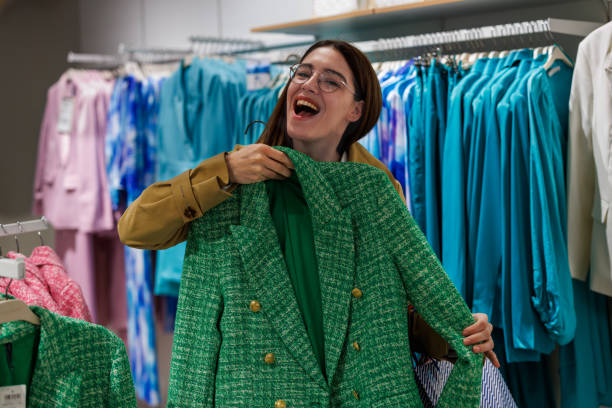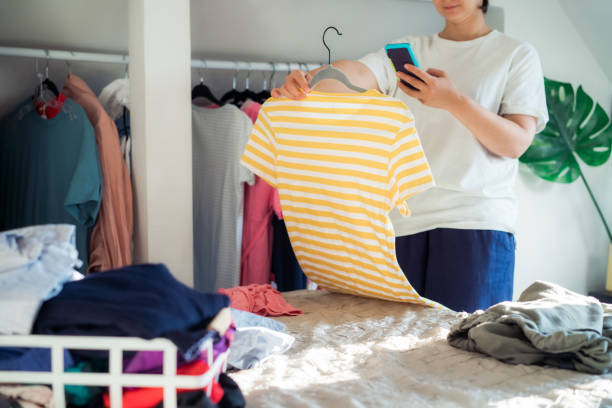How to Build a Sustainable Wardrobe: Top Tips for Eco-Friendly Fashion
Building a sustainable wardrobe is an excellent step towards a more environmentally conscious lifestyle. By making mindful choices about your clothing, you can significantly reduce your ecological footprint. In this article, we will explore various strategies to curate a wardrobe that is both stylish and sustainable.
1. Assess Your Current Wardrobe

The first step in building a sustainable wardrobe is to take a good look at what you already own. This involves going through your closet and evaluating each piece of clothing. Identify the items you wear regularly and those that barely see the light of day. By doing this, you can better understand your actual needs versus wants. Consider the quality and versatility of your clothing, as these are key factors in sustainable fashion. This critical assessment helps you avoid unnecessary purchases in the future and ensures that your wardrobe is filled with items that you genuinely love and will wear often.
2. Prioritize Quality over Quantity
One of the fundamental principles of a sustainable wardrobe is to invest in high-quality pieces that will last. High-quality clothing often comes with a higher price tag, but it’s a worthwhile investment. Durable materials and well-constructed garments can withstand the test of time, reducing the need for frequent replacements. When shopping, look for natural fibers such as organic cotton, bamboo, or wool, which are not only durable but also environmentally friendly. By prioritizing quality, you’ll create a wardrobe that is both sustainable and timeless.
3. Embrace Second-Hand Shopping
Second-hand shopping is an excellent way to find unique, high-quality pieces while minimizing your environmental impact. Thrift stores, vintage shops, and online second-hand marketplaces offer a plethora of options for fashion-forward individuals. By purchasing pre-loved items, you are extending the life cycle of clothing and reducing the demand for new production. Additionally, second-hand shopping can often be more affordable, allowing you to find stylish pieces without breaking the bank.
4. Adopt a Capsule Wardrobe
A capsule wardrobe consists of a small collection of essential, versatile items that can be mixed and matched to create various outfits. This minimalist approach focuses on quality and functionality, ensuring that every piece serves a purpose. Creating a capsule wardrobe requires careful consideration of your lifestyle and preferences. Start by selecting a few timeless staples such as a classic blazer, a crisp white shirt, and a pair of well-fitted jeans. These foundational pieces can be easily paired with other items to create a wide range of looks, reducing the need for excessive clothing.
- Classic blazer
- Crisp white shirt
- Well-fitted jeans
- Versatile dress
- Comfortable shoes
5. Practice Mindful Purchasing Decisions
Mindful purchasing involves being intentional about the clothing you buy. Before making a purchase, ask yourself if the item will genuinely add value to your wardrobe. Consider whether you already own similar pieces and how often you will realistically wear the new item. Opt for brands that prioritize sustainable and ethical practices, as supporting these companies aligns with creating a sustainable wardrobe. Doing research and reading reviews can also help you make informed decisions. By being more conscious of your purchasing habits, you can contribute to a more sustainable fashion industry.
Conclusion
Building a sustainable wardrobe is a journey that involves conscious choices and ongoing effort. By assessing your current wardrobe, prioritizing quality, embracing second-hand shopping, adopting a capsule wardrobe, and practicing mindful purchasing, you can make a significant impact on the environment. Remember, sustainable fashion is not about perfection; it’s about making better choices that collectively lead to a positive change. Start small, stay committed, and enjoy the process of creating a wardrobe that reflects both your style and your values.
FAQs
Q: What is a sustainable wardrobe?
A: A sustainable wardrobe consists of clothing items that are produced, purchased, and disposed of in ways that have a minimal negative impact on the environment. This includes focusing on quality, longevity, and ethical practices.
Q: How can I tell if a brand is sustainable?
A: Look for transparency in the brand’s production processes, use of eco-friendly materials, fair labor practices, and certifications such as Fair Trade or Global Organic Textile Standard (GOTS).
Q: What are natural fibers?
A: Natural fibers include materials like organic cotton, bamboo, wool, and hemp. These fibers are biodegradable and often require less energy and water to produce compared to synthetic fibers.
Q: How can I start a capsule wardrobe?
A: Begin by selecting a few versatile, high-quality pieces that you can mix and match. Focus on neutral colors and timeless styles that suit your lifestyle and can be worn in various settings.
Q: Why is second-hand shopping sustainable?
A: Second-hand shopping extends the lifecycle of clothing, reduces waste, and lessens the demand for new production. It also allows you to find unique and often more affordable pieces.
